Light painting is a captivating technique in photography that involves using handheld light sources to illuminate subjects or create artistic designs within a darkened environment. This article explores the history, techniques, equipment, artistic considerations, practical tips, and cultural impact of light painting for audiences in the United States.
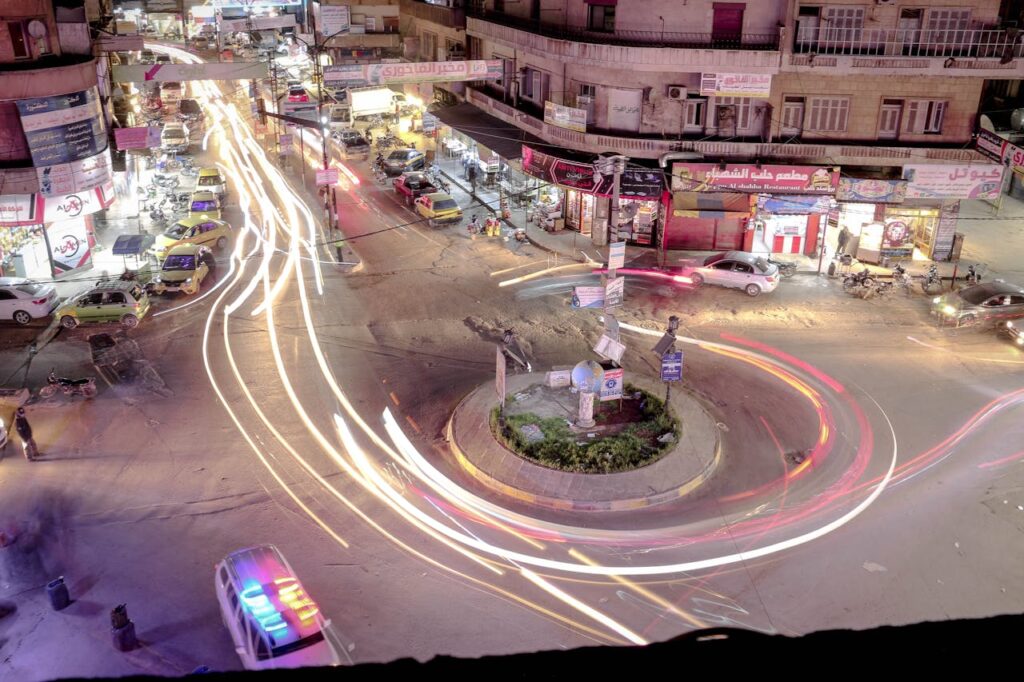
Introduction to Light Painting
Light painting is a photographic technique where photographers use various light sources, such as flashlights, LED wands, or even fireworks, to paint or draw in the air while capturing long exposure photographs. It transforms ordinary scenes into ethereal, visually striking compositions by incorporating light as an essential medium of artistic expression.
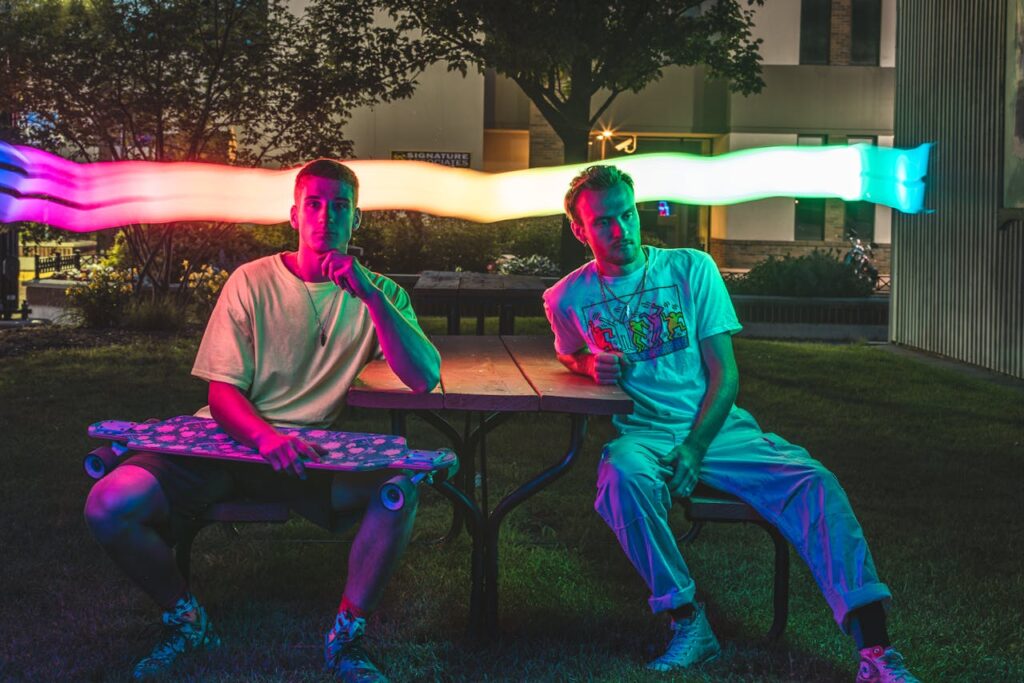
History and Evolution
The origins of light painting can be traced back to the early experiments in photography in the 19th century, where long exposure times allowed for creative manipulation of light sources. In the 20th century, artists like Pablo Picasso and Gjon Mili used light painting techniques to create abstract images and capture motion in photography. Today, advancements in digital cameras and lighting technology have expanded the creative possibilities of light painting.
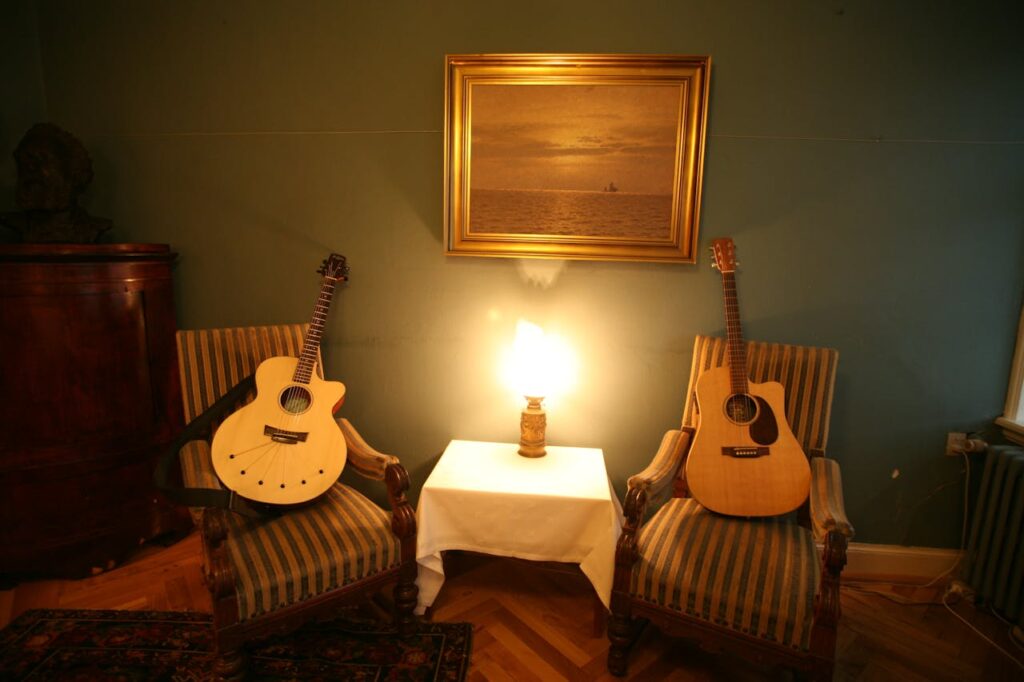
Techniques and Equipment
Long Exposure Photography: Light painting relies on long exposure photography, where the camera’s shutter remains open for an extended period (often seconds to minutes). This allows enough time for the photographer to move light sources within the frame, creating trails, patterns, or illuminating subjects selectively.
Light Sources: Various light sources can be used for light painting, including handheld flashlights, LED light sticks, glow sticks, fiber optic tools, and even fireworks. Each light source offers unique qualities in terms of color, intensity, and duration of light emission, influencing the visual impact of the final photograph.
Camera Settings: Set the camera to manual mode to have control over aperture, ISO, and shutter speed settings. Typically, low ISO settings (e.g., ISO 100) reduce noise, while small apertures (e.g., f/8 to f/16) increase depth of field and sharpness. Shutter speed varies depending on the desired effect, often ranging from a few seconds to several minutes.
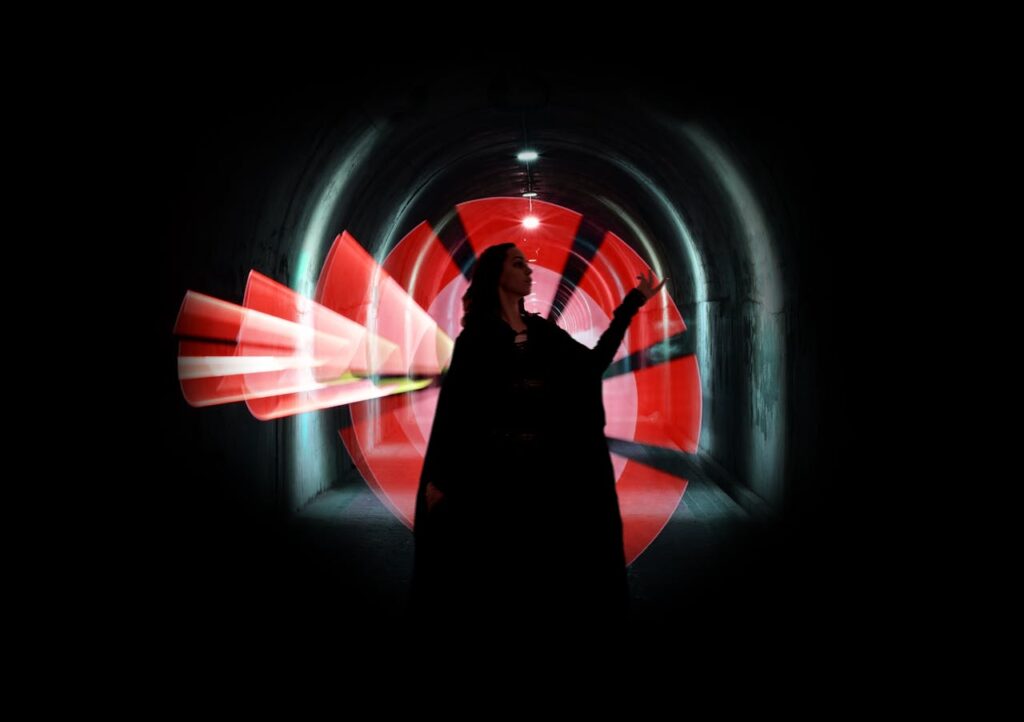
Artistic Considerations
Composition and Design: Planning the composition is essential in light painting photography. Experiment with different light patterns, movements, and placements to create abstract designs, illuminate subjects creatively, or enhance textures and details within the frame.
Color and Contrast: Manipulating color temperature and light intensity can alter the mood and visual impact of light painting photographs. Warm tones evoke coziness and intimacy, while cool tones convey tranquility or mystery. Contrast between light and shadow enhances depth and visual interest.
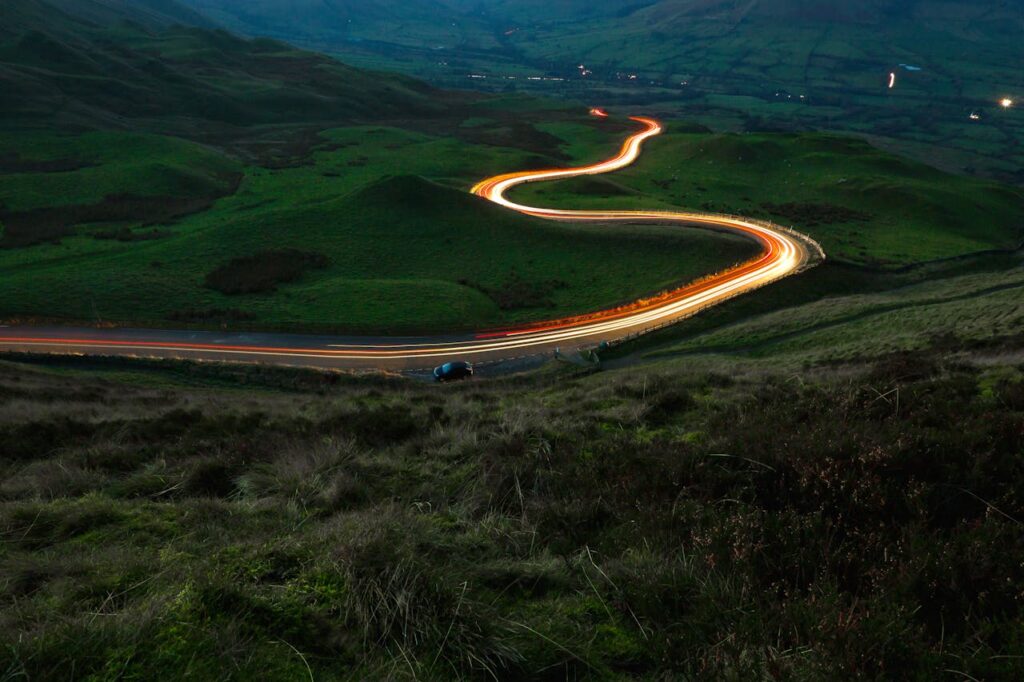
Practical Tips for Light Painting Photographers
Location and Environment: Choose dark or low-light environments with minimal ambient light pollution to achieve clear, well-defined light painting effects. Urban landscapes, forests, or abandoned buildings provide intriguing backdrops for light painting experimentation.
Experimentation and Patience: Light painting requires experimentation and patience to achieve desired results. Practice different techniques, refine movements, and adjust camera settings to master the art of painting with light effectively.
Post-Processing: Use photo editing software like Adobe Photoshop or Lightroom to enhance colors, adjust exposure, and fine-tune details. Minimalist editing preserves the authenticity of light painting while optimizing visual impact for display or publication.
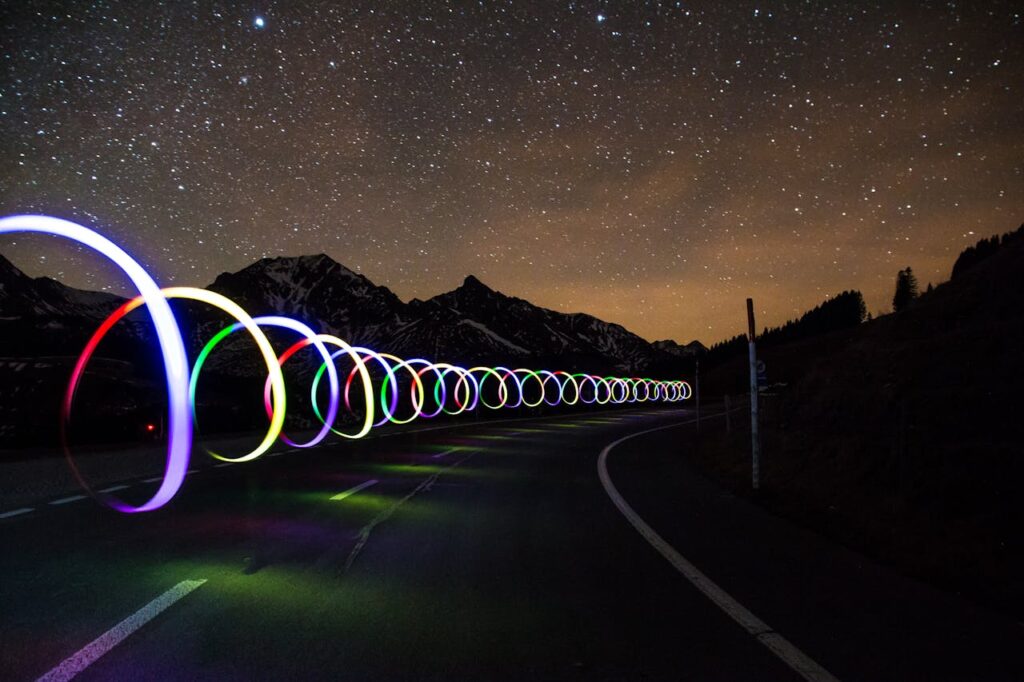
Cultural Impact and Contemporary Trends
Artistic Expression: Light painting challenges traditional photography norms by blending technology with creative expression. It inspires photographers to push boundaries, experiment with new techniques, and showcase personal artistic visions through illuminated imagery.
Social Media and Community Engagement: Platforms like Instagram and Flickr foster communities of light painting enthusiasts who share techniques, exchange ideas, and showcase their work globally. Online forums, workshops, and exhibitions provide platforms for collaboration and recognition within the photography community.
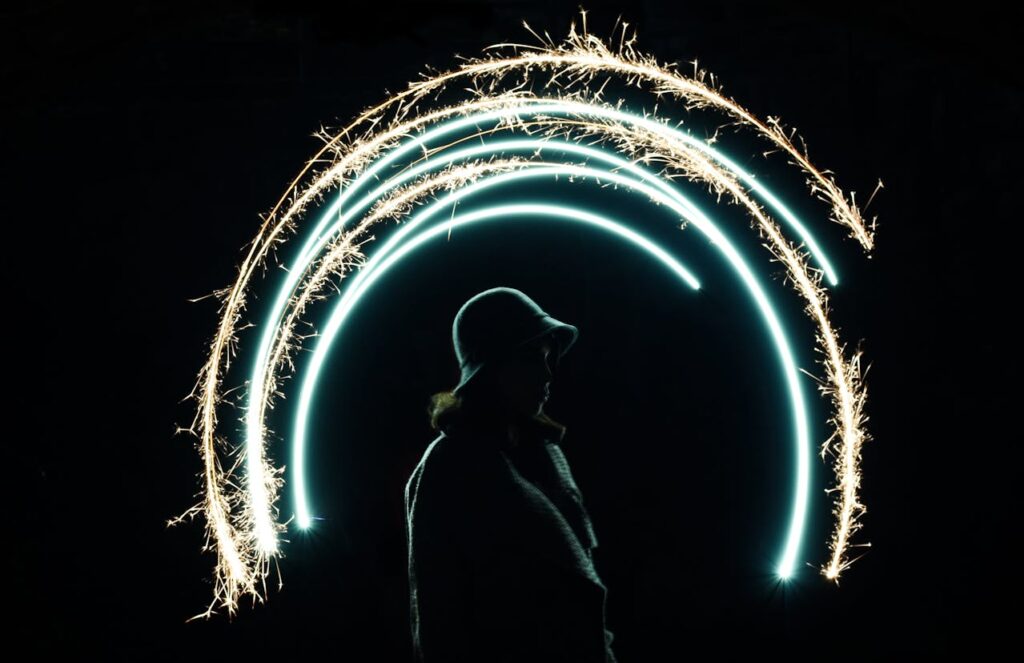
Conclusion
In conclusion, light painting in photography offers a unique avenue for artistic exploration, creativity, and visual storytelling in the United States and beyond. By mastering technical skills, experimenting with light sources, and embracing innovative approaches, photographers can create mesmerizing images that transcend conventional photography techniques.
From capturing abstract designs and ethereal landscapes to illuminating subjects with vivid colors and textures, light painting continues to captivate audiences with its blend of technical precision and artistic ingenuity. As photographers harness the power of light to paint with creativity and imagination, the art and impact of light painting photography evolve, inspiring admiration, curiosity, and appreciation for the boundless possibilities of visual expression in the digital age.